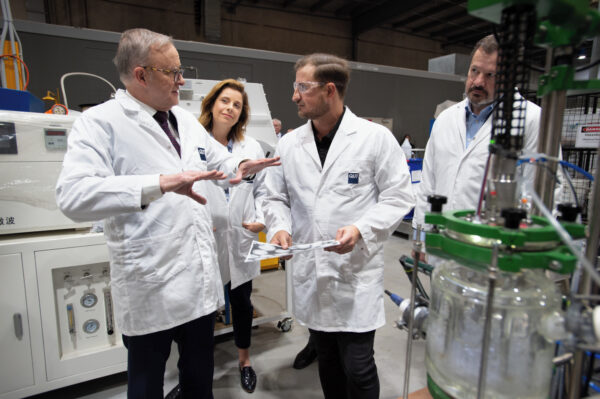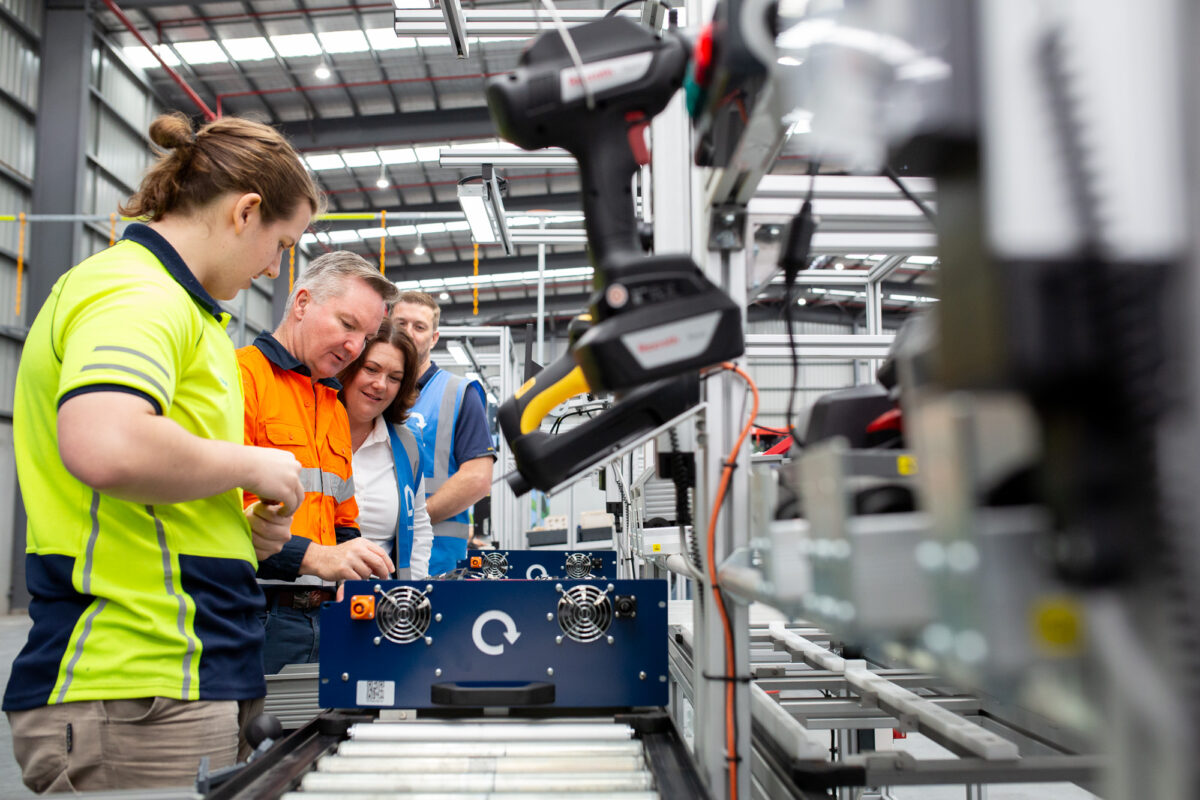It makes perfect sense for Australia to pursue domestic battery manufacturing. Australia has all the ingredients needed to create a booming battery industry: abundant minerals, a strong resource sector, renewable energy resources, manufacturing know-how, trading partners and a skilled workforce. Now it’s time to get cooking.
But building a thriving national battery supply chain and local manufacturing industry won’t happen overnight. While new money is important for any new industry, what’s been missing is overarching government co-ordination. Otherwise it could mean spending a lot of money to little effect.
#AusGov now has a National Battery Strategy outlining strategic priorities and opportunities to grow a thriving local battery industry.
Learn more: https://t.co/jXc14I71PO#FutureMadeInAustralia #NationalBatteryStrategy #Budget2024 #batteries #manufacturing pic.twitter.com/KvYQOcbvbd
— Department of Industry, Science and Resources (@IndustryGovAu) May 22, 2024
Pouring new money into battery action
The latest federal budget contained plenty of new money for batteries:
- $523.2 million for a “Battery Breakthrough” to help manufacturers build capability in crucial areas. They will be paid to focus on high-value battery products that align with Australia’s areas of advantage and support the climate energy transition.
- $20.3 million for “Building Future Battery Capabilities” to develop skills and expertise through stronger national collaboration. This includes funding to deliver a supply chain navigator tool. There’s also a battery innovation and scale-up program, best practice guidelines and standards, and battery industry skills and training.
- $5.6 million to deliver an “Australian Made Battery Precinct” in partnership with the Queensland government. The plan is ultimately to invest up to $100 million in the precinct.
- $1.7 billion for the Future Made in Australia Innovation Fund. It will support innovation, commercialisation, pilot and demonstration projects and early-stage development in priority sectors. This includes manufacturing clean energy technologies such as batteries.

Prime Minister Anthony Albanese, left, and Industry and Science Minister Ed Husic, right, during a visit the Queensland University of Technology Advanced Battery Facility in Brisbane. Image: QUT
We need more energy storage
Electricity storage will be crucial for decarbonising the global energy sector. It also underpins emissions reductions across the wider economy by enabling other sectors such as transport and heavy industry to be electrified.
Batteries cut costs for the dynamic electricity market and support the energy transition. Renewables remain the lowest-cost energy source in Australia.
There’s plenty of demand for batteries. We need more storage in our energy system right now.
Australia currently has 1.7 GW of energy storage capacity. Our forecasts suggest we’ll need a whopping 14.9 GW of storage by 2030, and 30.5 GW by 2040. That’s on the lowest-cost pathway for Australia to play its part in limiting global warming to 1.5°C.
This means Australia is importing batteries while our emerging battery industry develops.
With government support Australia can develop onshore battery manufacturing at scale. This will give Australia better access to clean technologies while making more use of mineral resources. Such a strategy is key to making best use of opportunities in the transition to a net-zero global economy.
However, the history of the automotive industry in Australia shows domestic industries face substantial global competition. The challenge ahead is developing the skilled battery manufacturing workforce to harness available mineral resources.
Australia has strong university and private technology industry sectors, so we should be able to pull it all together. Building a skilled workforce creates social and economic benefits and can be a source of national pride.
The development of sovereign capacity in battery manufacturing is welcome.
🇦🇺 is the source of 50% of battery minerals globally, but 75% of supply comes from China.
We are well placed to develop a value-adding industry and reduce sovereign risk.https://t.co/61NDFoWdQK
— David Pocock (@DavidPocock) May 22, 2024
Co-ordinating cooks in the kitchen
Other countries are looking to build their own battery industries too. However, Australia can leverage an enormous advantage in critical minerals and energy resources. By joining with trading partners, Australia can provide “green” minerals and batteries to the world.
There is also an opportunity to align with solar manufacturing and other high-tech industries, which will support Australia’s ambition to become a renewable superpower.
The National Battery Strategy can contribute to decarbonising and building a prosperous nation that offers secure work for Australians. Australia’s deployment of battery storage can help make the most of this once-in-a-lifetime green economy transformation.
This will require co-ordination across governments and industry. Along with Future Made in Australia, there’s the National Reconstruction Fund and government support through the Clean Energy Finance Corporation and Australian Renewable Energy Agency.
The strategy unveiled last week is a solid step towards the nation achieving its energy storage goals. Importantly, too, it can help ensure Australia’s industrial and manufacturing heartlands remain competitive in a net-zero world.
We applaud @ausgov's National Battery Strategy which aims to make AU competitive in producing batteries.
Looking forward to the details on the Small-scale Renewable Energy Scheme, the Battery Booster program, & the Battery Breakthrough initiatives.https://t.co/eZKrVA4itq
— SmartEnergyCouncil (@SmartEnergyCncl) May 23, 2024
Authors: , Energy Systems Program Impact Manager, Climateworks, Monash University; , Climateworks Centre, Country Lead, Australia, Monash University
This article was originally published in The Conversation and is republished here under a Creative Commons Licence
The views and opinions expressed in this article are the author’s own, and do not necessarily reflect those held by pv magazine.
This content is protected by copyright and may not be reused. If you want to cooperate with us and would like to reuse some of our content, please contact: editors@pv-magazine.com.








By submitting this form you agree to pv magazine using your data for the purposes of publishing your comment.
Your personal data will only be disclosed or otherwise transmitted to third parties for the purposes of spam filtering or if this is necessary for technical maintenance of the website. Any other transfer to third parties will not take place unless this is justified on the basis of applicable data protection regulations or if pv magazine is legally obliged to do so.
You may revoke this consent at any time with effect for the future, in which case your personal data will be deleted immediately. Otherwise, your data will be deleted if pv magazine has processed your request or the purpose of data storage is fulfilled.
Further information on data privacy can be found in our Data Protection Policy.